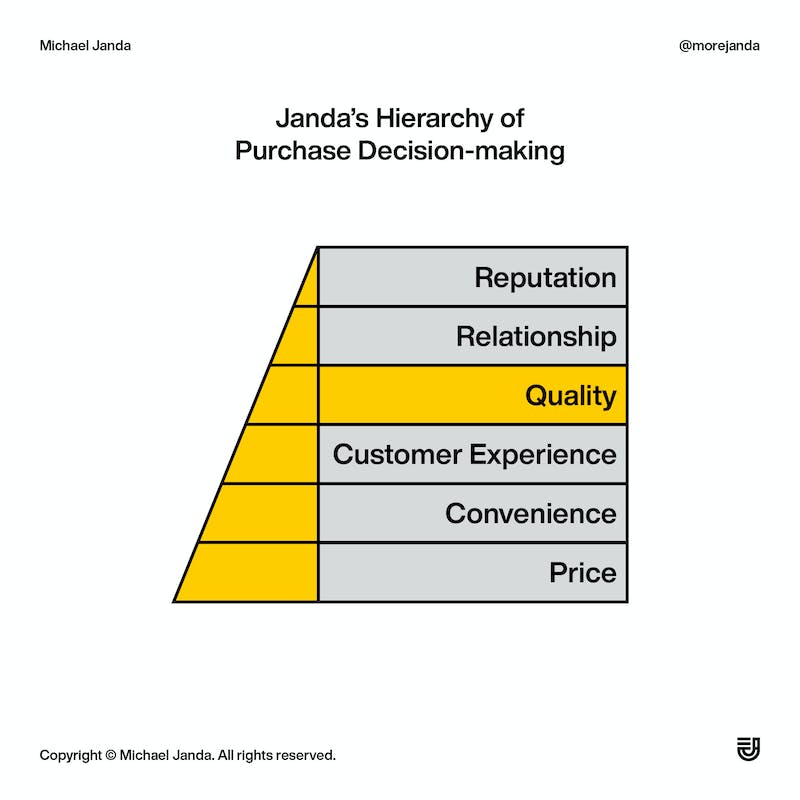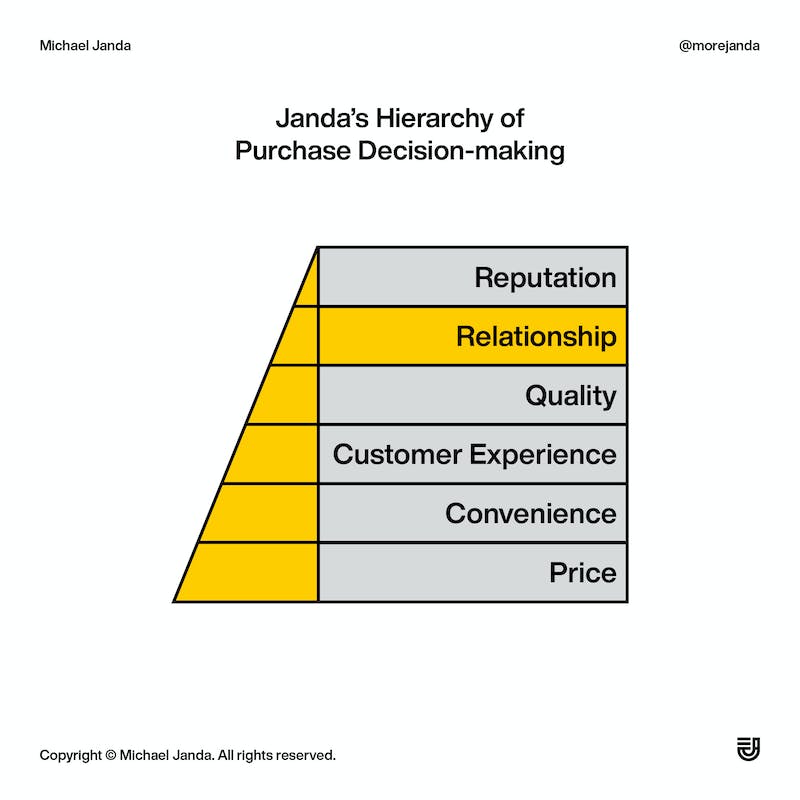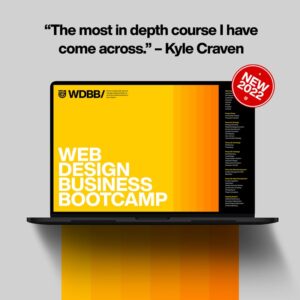This week I decided to tackle how “Trying to sell $10,000 logos might kill your business.” This topic comes as a response to those of you who have heard a favorite thought leader tell you that you are not charging enough and you need to dramatically increase your prices… 10x… 20x… 50x. You may have been told that not charging enough devalues your work and the industry as a whole.
While it is generally true that most creatives do not charge enough, a decision to dramatically increase your prices (for example your $500 logo projects should become $10,000 logo projects) could have a devastating effect on your business. Your new price has the potential to yield zero project wins if you do it without understanding the competitive dynamics of sales that I will explain to you here. Let’s dig in.
Business is a competitive environment. It is you against another company or two, head to head in a winner take all war, and there are a few key factors in which we always compete for business: price, convenience, customer experience, quality, relationship, and reputation. Let’s define each of these items and then talk about how this knowledge can help you improve sales at your business.
Price:
At the bottom of the competitive sales pyramid is “price.” When two businesses compete for the same sale, price is almost always a deciding factor. And some people are shopping for the cheapest price, no matter what.
Convenience:
Some people will pay more for convenience and there are companies that build their entire business around this model. For example, a gallon of milk may cost $2.50 at the grocery store, but if the grocery store is five miles away, many people will gladly pay $4.00 for the gallon of milk at the 7-11 “convenience store” that is a block away. In your business, selling creative services, convenience plays a part in the customer decision when they examine your turnaround times, time zone, location, and accessibility. If you are local to your client (making daily communication easy) and you are competing against a freelancer who has a 12-hour time difference, you may win the project because you are “convenient” even though your price may be higher.
Customer Experience:
Some people will pay more for a better customer experience. Sure, there may be cheaper options, but if the cheaper option comes with a risk of a miserable experience working together, many people will pay more to you if they believe their experience working together will be better than the cheaper option. Providing a good customer experience means communicating effectively, making your customer feel heard, being organized and systematic, and making the whole engagement stress free and enjoyable.
Quality:
High quality work is at the heart of what we all want to create. Fortunately, there are many clients who are willing to pay high dollar value for top quality work. When we talk about quality, we are referring to the visual attention to detail, the user experience, and the potential return on investment for the client. If your client believes you will provide better quality work, they may pay more to work with you than a cheaper competitor.
Relationship:
Next on the hierarchy is relationship. As the adage goes, “People do business with people they know, like and trust.” If you have a trusting relationship with your client, and your competition does not, the client may pay more to work with because you are “you” and the client knows you won’t let them down. (I built my agency on relationships.) Oftentimes, if you have the best relationship and all other factors are equal, you win.
Reputation:
Reputation is the key to unlocking the highest paying opportunities. Think of the names, Paul Rand, Michael Beirut, Pentagram, Stefan Sagmeister, Milton Glaser, McCann, BBDO, the list goes on. These names have a reputation of excellence that was built over years and years of winning awards, landing big clients, authoring books, speaking engagements and other activities that make potential customers “know who they are.” The name is what sells. There are a lot of amazing designers in the world capable of doing amazing design work, but when a big brand with a huge budget needs a major redesign, they most often choose a big name to do the work. Want to start providing high budget work? Start building your reputation.
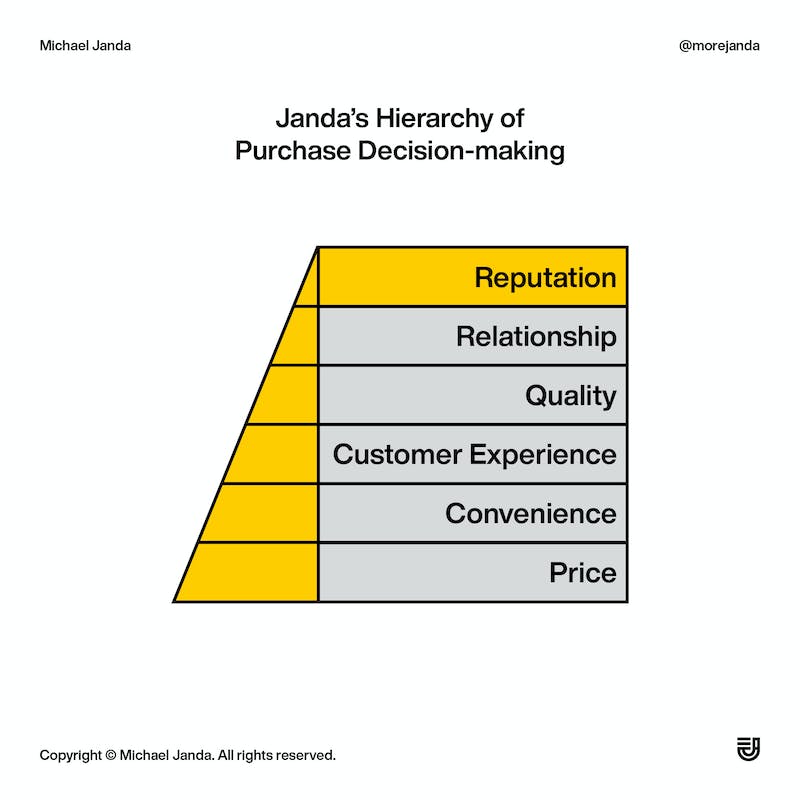
Now that we are speaking the same language in terms of competitive sales, let’s examine how this plays out in the real world.
Scenario 01: Your competition provides your same quality work but they are cheaper than you.
You and your competition both offer the client a quality solution, but they are cheaper than you. Want to win the project? Try convincing your client that their experience working with you will be more structured and enjoyable than your competition.

Scenario 02: Your competition has a good relationship with the client and they provide quality work.
In this situation you may need to provide a better price in order to win the project. If you offer a better customer experience and convenience, that can only help you land the work.
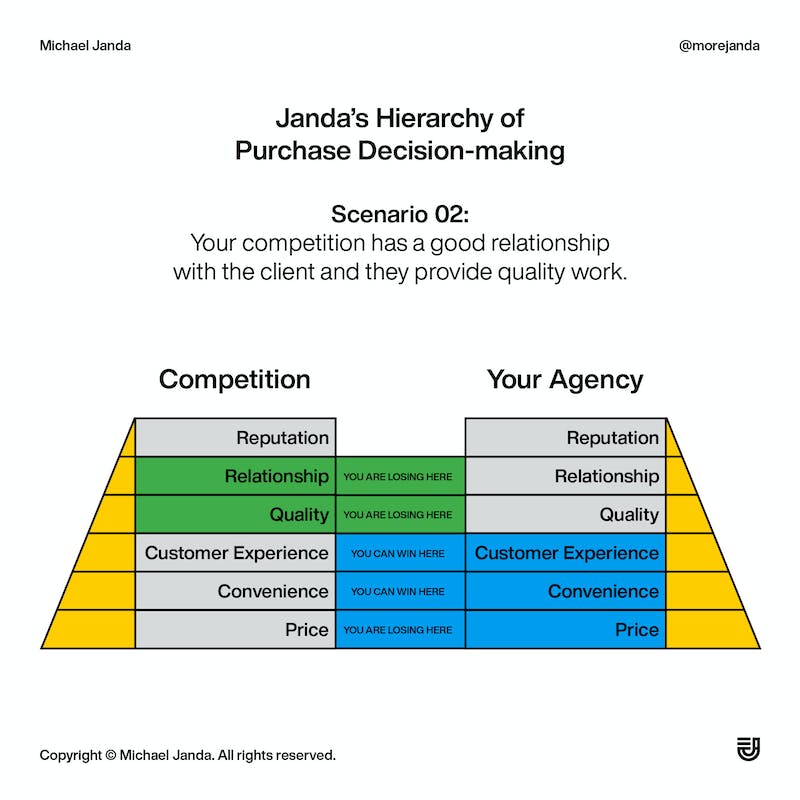
Scenario 03: Your competition has an amazing reputation and your client has the budget to afford them.
When you are competing against reputation and your client has the budget to afford them, the only chance you have to win is by convincing the client that you are better in all other categories.
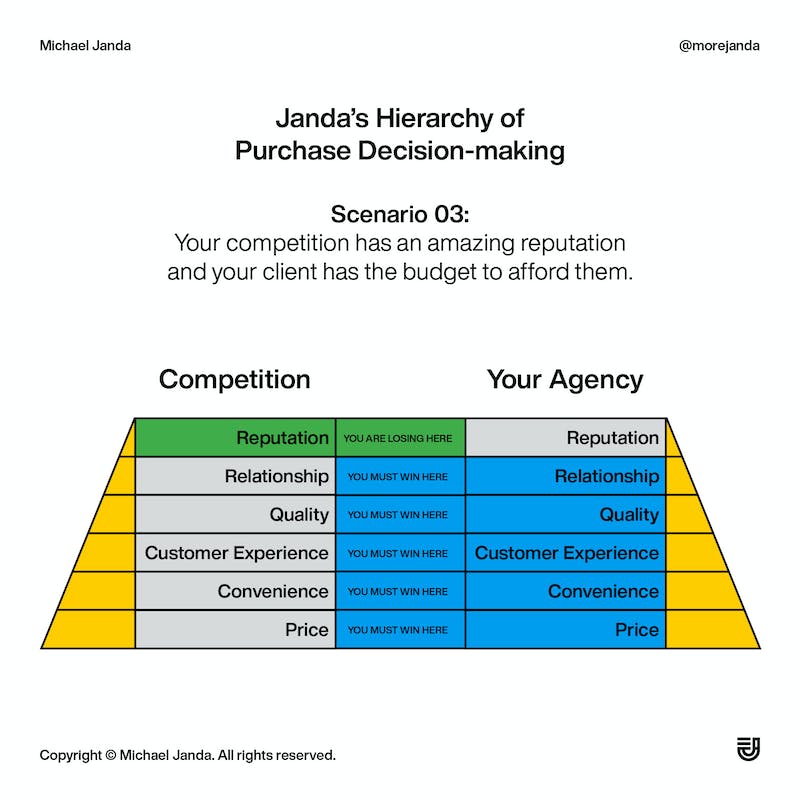
Scenario 04: You have built an amazing reputation and clients are willing to spend big money to work with you.
This is where $10,000 or $100,000 or $1,000,000 logos can be found. Yes, it is possible to get high paying projects based on relationship (and sometimes quality), but if you want a steady stream of big dollar projects, build your reputation over time.

We could list scenarios all day and examine how they fit into the competitive diagram. The summary is to know the position you are selling from and try to win in as many categories as you can, knowing that the higher categories most often carry the most weight in a client’s decision process.
How trying to sell $10,000 logos might kill your business.
If you are not selling from a position of relationship or reputation and you increase your logo price from $300 to $10,000, good luck. Clients will often have this reaction, “Who do they think they are? $10,000 for a logo? We surely can find someone just as talented who can design a great logo for cheaper.” And it is true. Some people can sell $10,000 logos based on their reputation and relationships, even though your work quality, price, customer experience, and convenience are the same or better.
What should you do?
Work on improving each of the elements in a competitive sales pyramid over time. As you improve in each area, continue increasing your prices. As you find success with higher prices, increase them again. Continue this pattern over time until you are selling from the positions higher on the ladder.
I hope this information serves you well as you continue to climb your way higher in your career.



